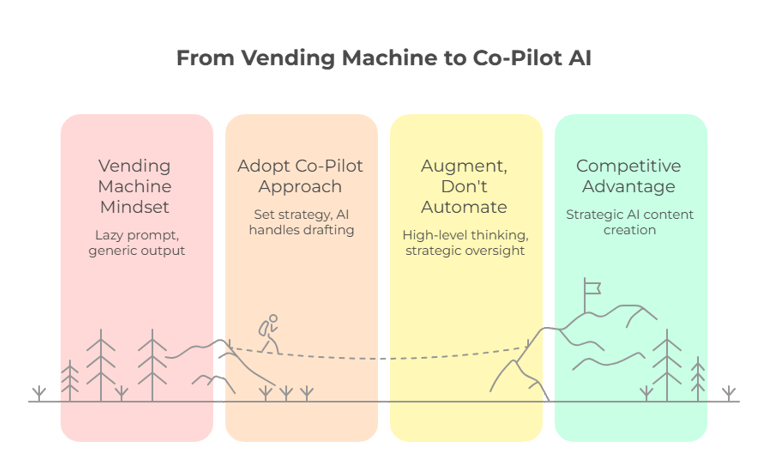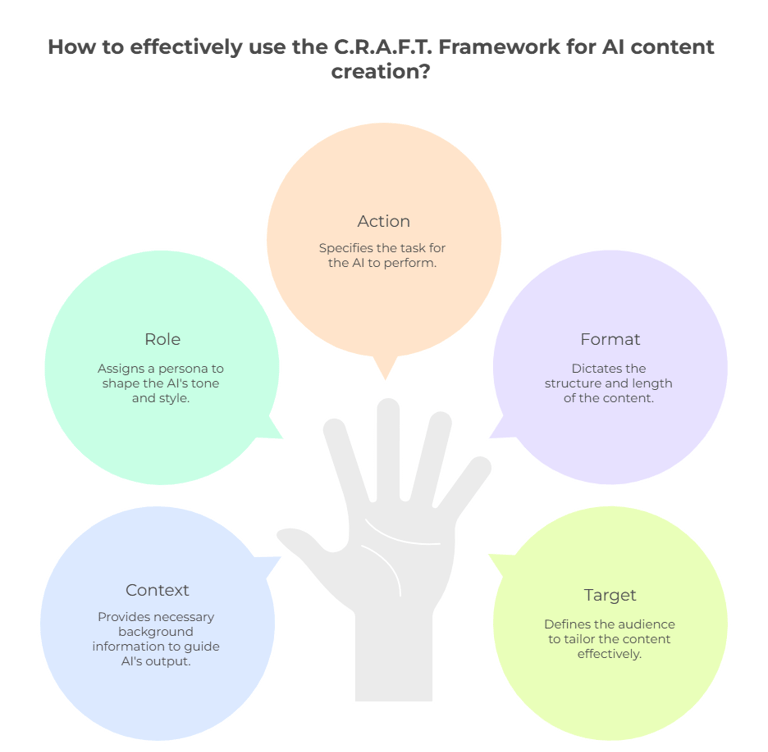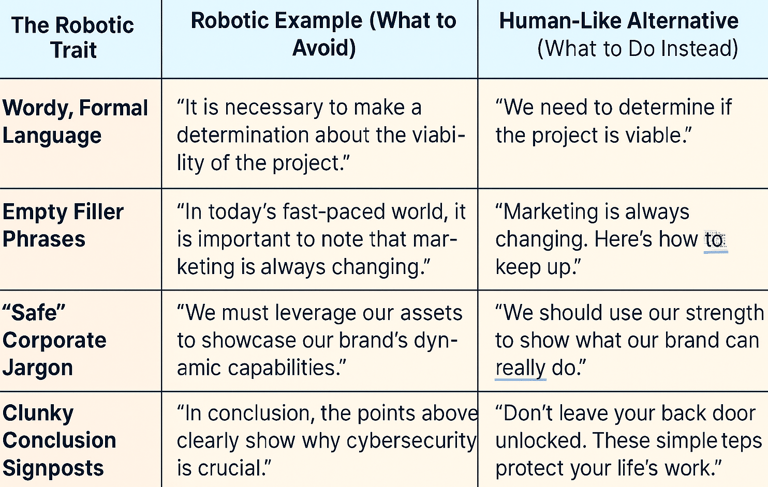Is Robotic AI Content Killing Your Growth? 3 Steps to Sound Human
8/20/20254 min read


Are you using AI to create content?
Good. You're ahead of the curve.
But here's the tough question: does your AI content sound like a human wrote it, or does it have the personality of a toaster?
If you’re not careful, you end up with bland, generic text that fails the one test that matters: the trust test.
The internet is drowning in a sea of sameness. Europol estimates that up to 90% of online content could be synthetic in the next few years. Your customers are getting better and better at spotting the fakes.
So, how do you stand out?
You learn to transform robotic drafts into authentic content that connects with readers and drives real growth. In this article, you'll learn:
How to instantly spot the three signs of low-value AI content.
The critical mindset shift that separates amateur AI users from the pros.
A simple framework to make your AI content sound genuinely human.
Let's dive in.
Step 1: Diagnose the "Robotic Content" (The 3 Telltale Signs)
Before you can fix the problem, you have to know what it looks like. If your content shows these traits, it's a red flag for your audience.
Sign #1: Predictable, Rigid Skeletons
The classic five-paragraph essay structure. A painfully obvious intro, three body paragraphs, and a clunky "In conclusion..." to wrap things up.
It feels unnatural and signals a lack of creative thought.
[Image: A simple graphic illustrating a rigid, boxy robot vs. a dynamic, flowing human shape, labeled "Robotic Structure vs. Human Flow"]
Sign #2: The Emotional Void
The text is grammatically perfect, but it has no soul.
It lacks personal stories, strong opinions, and humor because the AI has no lived experience. It can't tell a story about its first business failure or a funny customer interaction.
This is a massive liability.
Why? According to Adobe, nearly 79% of business leaders believe creating authentic, human-centric content is critical for growth.
Sign #3: Wordy, Lifeless Language
The AI inflates its language to sound smart.
It says "make a determination" instead of just "decide."
It also relies on a repetitive loop of stale corporate buzzwords like "leverage," "showcase," and "dynamic." It’s the fastest way to make your reader’s eyes glaze over.
Step 2: Fix Your Process, Not Just the Prompt
See those signs in your content?
It’s easy to blame the tool. But the truth is, this bland output is a direct result of a flawed, low-effort process.
Most people are stuck in the "Vending Machine" mindset.
They write a lazy prompt (the coin), hit enter, and expect a perfect article to pop out. This approach guarantees generic, low-ROI content because it treats a powerful AI as a simple task-doer.
You need to adopt the "Co-Pilot" approach.
You are the pilot. You set the strategy and the destination.
The AI is your co-pilot. It handles the heavy lifting—drafting, research, summarizing—which frees you up for high-level thinking, storytelling, and strategic oversight.
This shift from automation to augmentation is everything. It turns your AI content strategy from a time-sink into a competitive advantage.
Step 3: Use the Human-in-the-Loop Framework
This is where the magic happens. Even with a brilliant prompt, the AI's output is just a first draft. It’s raw material.
The real value is created when you, the human expert, step in.
First, Master the Prompt (C.R.A.F.T. Framework)
Use the C.R.A.F.T. Framework for better drafts every time:
Context: Give the AI the background facts, data, and core arguments. Don't make it guess.
Role: Assign it a persona (e.g., "witty copywriter," "seasoned historian").
Action: Be direct. Use a clear command like "Write," "Analyze," or "Compare."
Format: Dictate the structure, length, and tone ("conversational," "500 words").
Target: Define your audience ("overwhelmed small business owners," "tech-savvy teenagers").
Then, Apply the Final Polish (Inject the Soul)
This is the non-negotiable step.
Inject Your Soul: Add real stories, personal anecdotes, and specific examples. Take a stand with a strong, defensible opinion. Unleash your unique voice.
Apply Your Craft: Hunt down and destroy clichés and filler words. Vary your sentence rhythm by mixing short, punchy sentences with longer ones. And be aggressive – cut the fluffy intro and rewrite the conclusion to offer a powerful final insight.
Be the Guardian of Truth: Fact-check every single claim. AI models "hallucinate" (a fancy word for "make stuff up"). It is your absolute duty to verify every stat and source.
Here’s a simple cheat sheet to help.
Conclusion
Let's be clear: the "robot" in your AI content isn't the algorithm. It's the low-effort, mechanical process used to command it.
The future of content doesn't belong to the AI that can write, nor to the human who refuses to use it.
It belongs to the skilled operator who understands they are the pilot, not the passenger. It belongs to the creator who uses AI for the heavy lifting, freeing up their energy for the things a machine can never do: strategic thinking, emotional storytelling, and building a real connection with other human beings.
AI can generate words. Only you can give them a soul.
So, what's the #1 robotic trait you're going to eliminate from your AI content this week? Share your thoughts at - hello@briskfab.com








